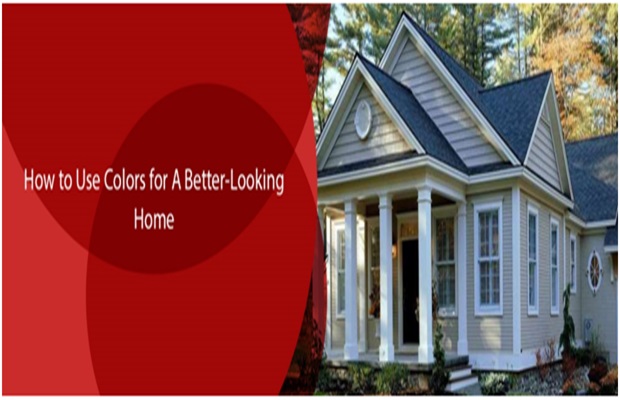Seemingly insignificant changes can actually make a world of a difference in your home. One of the most important factors that people tend to ignore is color. Like any interior design expert can tell you, colors that make up your living space are extremely important, both in terms of how a place looks, as well as your overall mood while you live there. Colors can bring a home together by connecting each room in a seamless manner, and the best part is, they don’t even have to match to give that impact.
Using colors in combination with energy smart products is the best way to create your dream home, but understanding color theory and implementing it perfectly can be tricky. For this purpose, you can consult a professional designer with ample knowledge on the subject, but in case you want a cheaper option, here are some techniques to enhance your home using colors.
Create Composure with Color
While colors in your entire home don’t necessarily need to match, there should be a certain degree of uniformity. Your home should come together in a way that leaves each room with its own unique identity, without them looking like entirely separate living spaces. This is especially applicable in homes that are more open with wide hallways and entrances that allow you to scan the next room entirely.
You can achieve uniformity by making sure that the basics are all the same. This means little things like flooring, windows, electrical outlets, ceiling fans.While these things may not sound that important in theory, they do play a significant role in bringing a home together.
The Star of the Show
There has to be at least one color that’s uniform in almost every single room. It doesn’t have to be something bright or eye-catching, just a neutral tone like white or beige that shines through in every room you walk into. This is the main color around which you should model everything else.You can use this basic color in combination with whatever else you may have in mind in terms of interior décor for each individual room.This way, the house will neither look too out of place, or boring and monotonous.
Carpets and Rugs Can Help
One of the simplest ways to connect two adjacent areas of a house is by using a rug. This method would work best in rooms with wide entrances, such as the living room or any hallway that you want to connect the rest of the house with. You can use this to connect kitchen to dining room, or even your bedroom to a walk-in closet. A rug not only makes a room look less empty and boring, it can really help bring two separate areas together in a very creative way. Again, one thing to keep in mind when selecting a rug is that it perfectly matches the theme of both the spaces which it is meant to be connecting.
Lighting is Important
Adding color through lighting may sound like a risky move, but if done in moderation, it can transform your living space in the best way. If you want to go for a cozy, calm vibe, somewhat dim, warm-toned lights might be your best bet. However, in certain rooms, if you want something a little bolder, you can always make use of smart LED strip lights to add that element. The best part about colored lighting is that it can be really cheap. For example, you can achieve sophisticated warm tones through cheap string lights fairly easily as they are readily available in most electronic stores.
Another way to do this is by adding strip lights to the back of furniture, like your bed or TV, to give a bit of a neon effect. The light spreads after being reflected off the wall behind it, creating a beautiful effect that’s surprisingly affordable.
Uniformity in Edges
You may have noticed the edges of your walls are often colored separately from the rest of it. Also known as “trims”, they are very much responsible for how your home comes together. This is because they provide a kind of uniformity that you can’t acquire through other methods without risking a boring, monotonous look. You must be extra careful when selecting what color to use though.
As mentioned previously, white is a neutral color that goes with pretty much anything. You can use it as a base color to base every other aspect of your décor on, but even with white, the exact shade you use matters a lot. This color alone has enough shades for you to get confused when selecting one, so make sure you do your research before picking even the most neutral of colors, and even then, it should match the rest of your neutral colors perfectly.
Conclusion
The Dos and Don’ts of design depend heavily on your preferences regarding color palettes. The reason for this is fairly simple: colors can make or break a place since it is absolutely pivotal when it comes to giving any room character. This is why you should select the color palette for any place very carefully selected, and the mentioned tips can help you do that.

